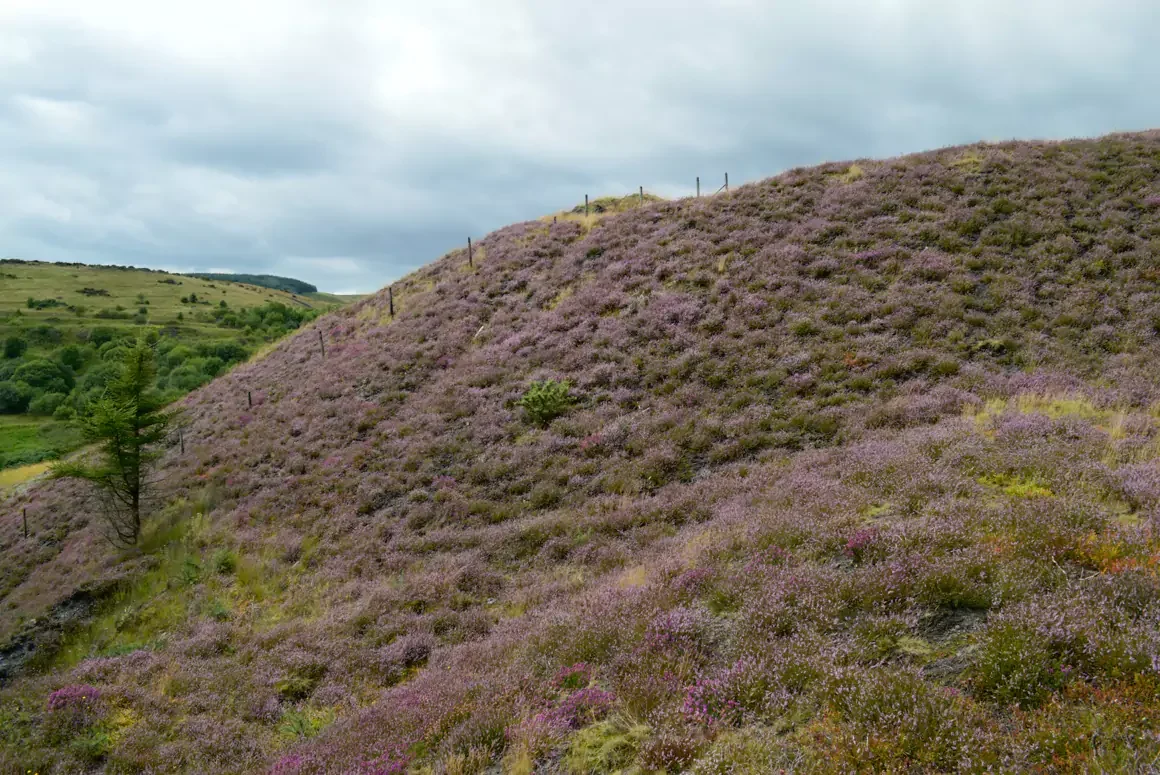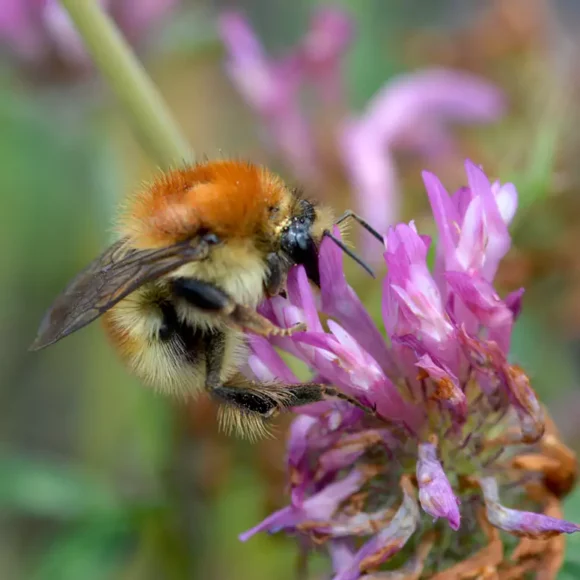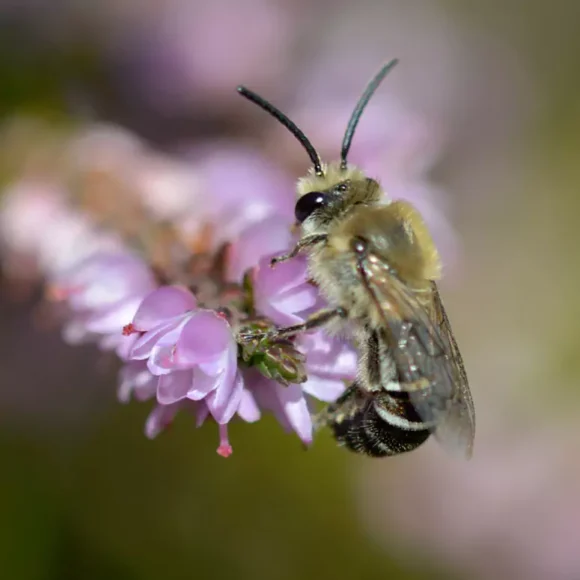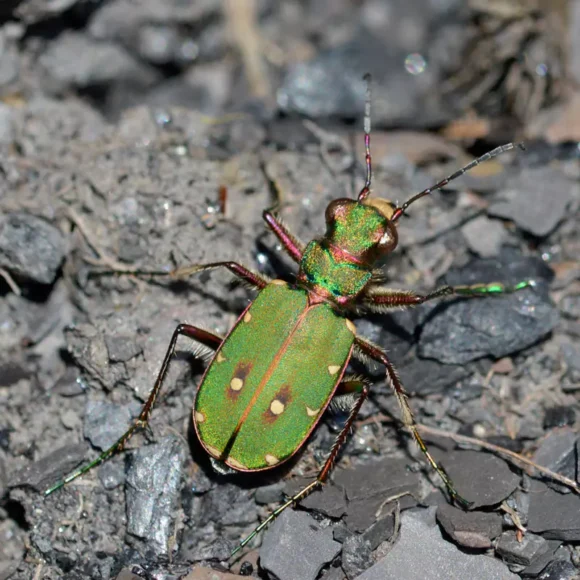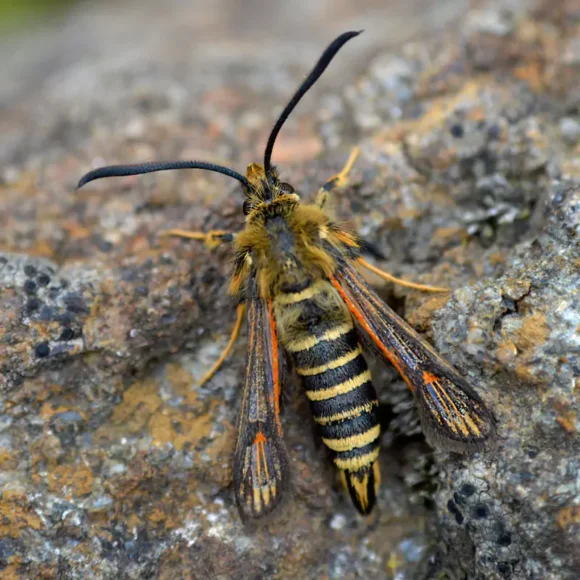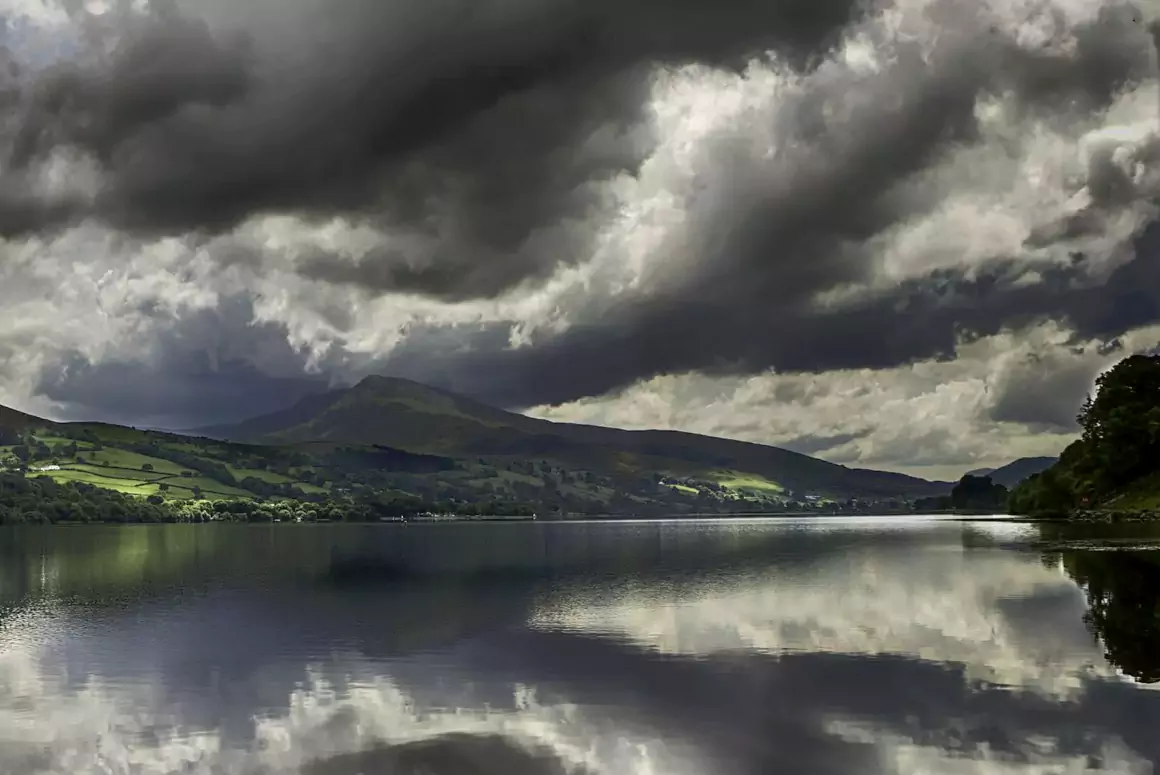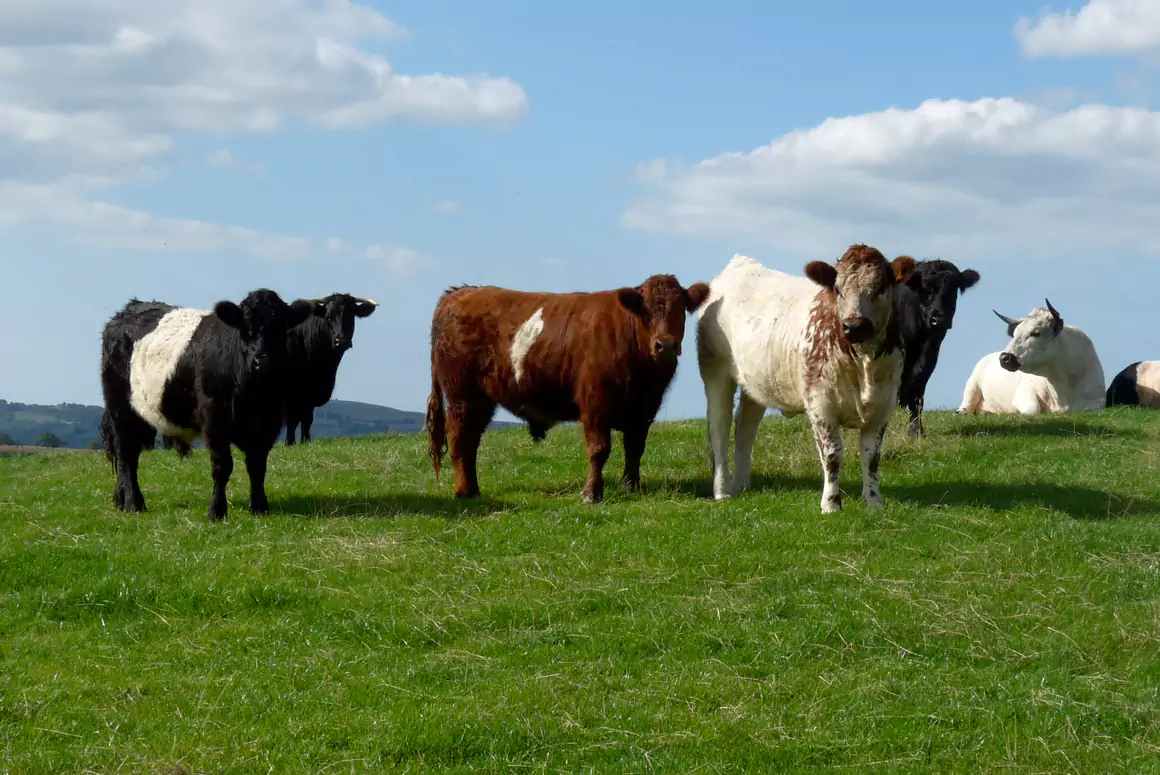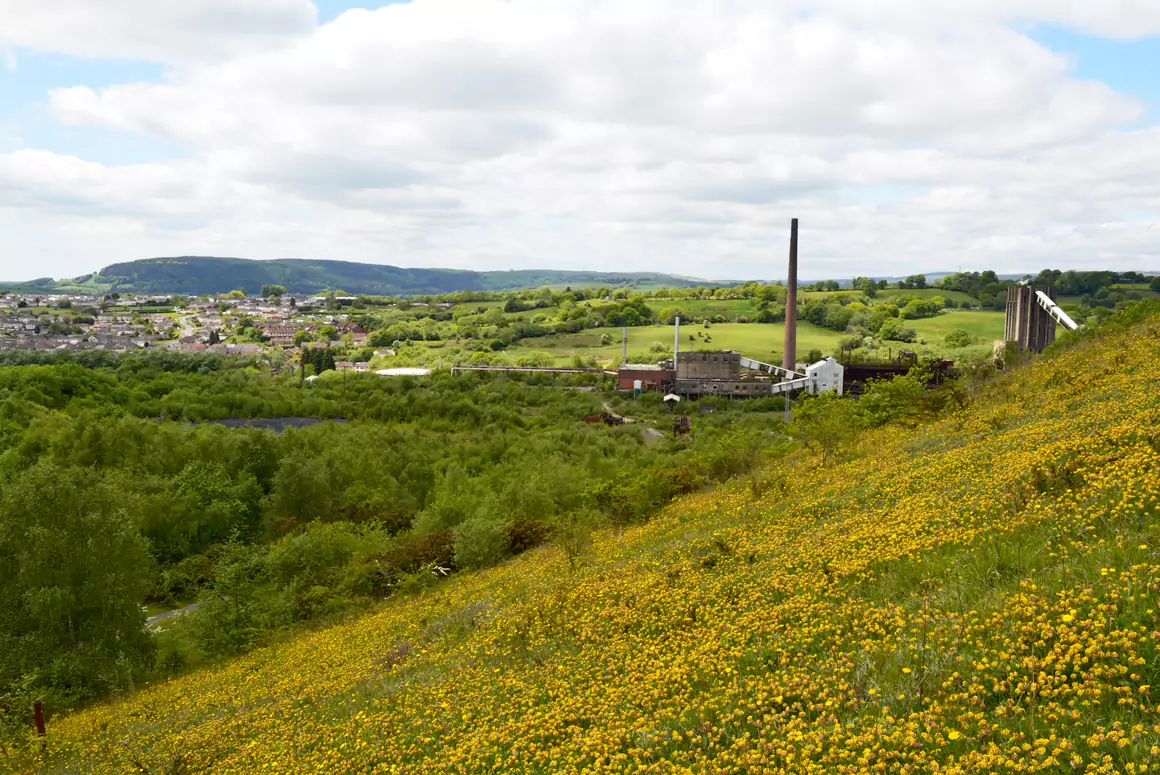For more than a century, the environment of the south Wales valleys and the fortunes of the people who lived here were shaped by coal mining. The scars of heavy industry were everywhere and black tips of coal waste brooded ominously over the valleys. At its peak, the industry employed some 232,000 men in 620 coal mines across south Wales. In 1913, 57 million tons of coal came up from these mines – a fifth of the entire output of the United Kingdom. Nearly all the signs of this once thriving industry have been lost with colliery buildings demolished and shafts capped. One thing has remained however, the numerous colliery spoil tips littering the landscape. Centuries of intense mining activity ultimately generated excessive quantities of waste, which was subsequently tipped upon the valley sides. Such spoil tips have become an iconic feature in the landscape of the south Wales valleys.
Feature image (above): Heath covered slopes of Gelli coal tips.
*First published in Welsh Country Magazine Mar-Apr 2017
Following the Aberfan disaster in 1966, many spoil tips were cleared amid fears of similar tragedies lying in wait. Those deemed stable remained, left undisturbed to naturally revegetate over time. Today, these tips form diverse and intricate habitats. Heathland, flower-rich grasslands, species-rich lichen and moss communities, scrub, wet woodland, calcareous seepages, wet flushes and seasonal pools have clothed the once bare ground. The intricate topography of mounds and hummocks has created a great diversity of micro-habitats, and these are responsible for much of the unique biodiversity of these sites.
Species and associated habitats
The thin, nutrient poor soils create stressed conditions that prevent dominant plant species (i.e. grasses) from taking-over, subsequently slowing vegetation succession. Wildflower-rich grasslands develop as a result, providing abundant forage for a range of pollinating insects. At least 85 different bee species have been recorded on coal tips in recent years; this equates to almost half of the Welsh bee fauna or a third of the UK fauna. The scarce Brown-banded carder bee is just one of the species found in these habitats.
- Brown-banded carder bee
- Heather Colletes beevisiting Ling Heather
Slow vegetation succession also results in substantial bare ground cover. This is of particular importance, creating warm microclimates in which thermophilic (warmth-loving) invertebrates can bask. This bare ground also provides invertebrates with burrowing and ground nesting opportunities, and provides foraging areas for visual predators such as the Green Tiger Beetle. The Grayling butterfly is particularly well suited to coal tips, its cryptic colouring providing excellent camouflage against the black spoil.
The complex chemistry and topography has encouraged unique floristic assemblages. This includes luxuriant stands of heather and bilberry, thickets of spring flowering gorse, and on the thinnest soils, an abundance of grasses and herbs. Characteristic coal spoil species include carline thistle, pearly-everlasting, centaury, cudweeds, sandworts, fairy flax, and a wide diversity of lichens and mosses. Lichen-heath encrusted with Cladonia is a particularly important habitat.
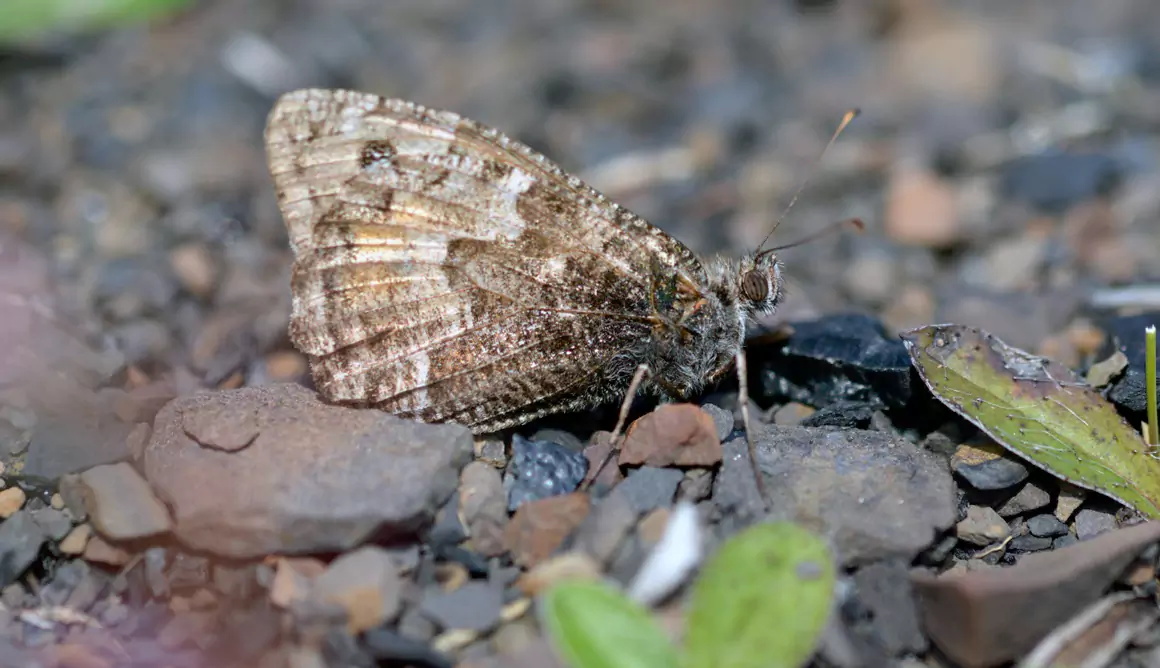
The diverse micro-habitats produce a wealth of rare and unusual Fungi. Breath-taking examples of the rare Cobalt Crust (Terana caerulea) can be found throughout the woodlands and scrub. Internationally threatened Waxcaps, Corals and Earth-tongues are scattered throughout the grasslands, heaths and wooded areas.
The warm, sunny slopes support excellent reptile habitat where common lizard and slow worm are abundant. Pools offer breeding habitat for frogs, toads, palmate newts and dragonflies. Areas of deep grass and heath support voles and mice, which in turn attract hunting buzzard, kestrel, red kite and barn owl.
- Green Tiger Beetle
- Six Belted Clearwing
Threats
These tips, however, are undervalued and misunderstood. As a legacy of a previous age, there is often a desire to sweep away the signs of a sometimes painful past. They face increasing threats from development, natural succession, re-working to extract useable coal, and inappropriate management and restoration. They are unique landscape features and sites of high biodiversity significance, and should be protected. The Colliery Spoil Biodiversity Initiative is working to raise awareness of the important biodiversity value of these often overlooked and underappreciated areas. It is hoped that one day in the near future, the long-term security of our spoil tips will be secured for future generations to appreciate and enjoy.
Words & Pictures: Liam Olds
See more photography from Liam Olds in this Pictorial Wales feature.


